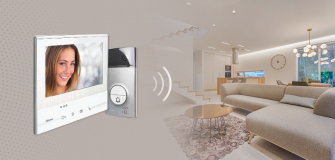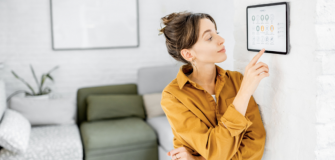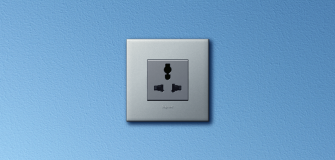Mastering Home Automation: A Journey Through Smart Home Devices and IoT
Mastering Home Automation: A Journey Through Smart Home Devices and IoT
How Does Home Automation Work?
In today’s rapidly evolving technological landscape, the concept of a smart home is becoming increasingly prevalent. Home automation systems, powered by IoT (Internet of Things) technology, have enabled control of various aspects of your home through your smartphone or voice commands. This blog will delve into home automation’s workings and explore its technologies.
What is Home Automation?
Home automation is a cutting-edge concept that integrates smart home devices and systems to control various aspects of your home. The core concepts of home automation revolve around convenience, energy efficiency, and customisation. These systems aim to simplify your life, reduce energy consumption, and tailor your home to your preferences.
How Does It Work?
The fundamental components of a smart home automation system include sensors, controllers, and actuators. These components work together to make your home smarter and more responsive to your needs.
Sensors are the eyes and ears of your smart home. They collect data about the environment and the activities of occupants. These sensors are crucial in understanding what is happening in and around your home.
Controllers are the brains of the operation. They process the data sensors gather and make decisions based on predefined rules or user inputs. These decisions could be as simple as turning the lights on whenever motion is detected.
Actuators are the muscles of the system. They execute the commands issued by the controllers. For example, actuators can turn on or off lights, adjust the temperature, or lock and unlock doors.
Common automated tasks include regulating room temperature, managing lighting, and securing your home.
Key Technologies
1. IoT and Home Automation
IoT (Internet of Things) and smart home automation are symbiotic. IoT technology empowers home automation by enabling various devices to link to the internet and “talk” with each other. This interconnectedness allows for remote control and automation of various household functions.
In a smart home, a wide array of devices, from thermostats to doorbell cameras, are integrated into the system. These devices collect and exchange data to create a network of smart appliances. For instance, your thermostat can “talk” to your lights and adjust the lighting conditions based on your preferred temperature settings.
2. Outdoor Motion Sensor Light
Motion sensors are integral components of smart lighting systems. These sensors are designed so as to detect movement within a specified range. When they detect activity, they trigger a response, often turning on lights.
The most significant benefit of an outdoor motion sensor light is energy savings. Lights are automatically turned on and off based on occupancy, reducing unnecessary energy consumption.
Moreover, outdoor motion sensor lights enhance security by illuminating dark areas when detecting motion. This can deter intruders and make homeowners feel safer at night.
3. Smart Home Security Systems
Security is a major concern for homeowners, and smart home automation offers a suite of solutions to address these concerns. Smart home security systems include devices such as cameras, doorbell cameras, and locks. These devices enhance the security of your home by providing real-time monitoring and control.
Indoor cameras are an essential component of home security. They allow you to monitor your home when you’re away. These cameras can stream live footage to your smartphone, allowing you to check on your home, pets, or family members in real-time.
Doorbell cameras are another critical part of smart home security. They allow you to see and communicate with visitors at your front door, whether you’re at home or miles away.
Locks offer convenient control over your home’s security. You can remotely lock or unlock your windows and doors through a smartphone app. This can be particularly useful for granting guests or service providers access when you’re not at home.
Featured Products
1. IP- Door Phone with Camera 10
When it comes to home security, this smart outdoor camera is a standout product. This device combines a 10″ touchscreen display with cutting-edge technology as a comprehensive solution for safeguarding your smart home.
You can answer incoming calls from the touch display, open the door lock, call other apartments within your building, and even connect with the guard station. Viewing call and alarm logs provides a complete history of who has visited your home or attempted to contact you.
Additionally, you can leave audio messages for other residents and receive messages from the guard station, facilitating effective communication within your community.
For those concerned about security, this smart outdoor camera excels. It simplifies alarm management through eight pre-arranged dedicated contacts. This feature allows for a swift and efficient response to security threats.
2. Living Now Switch / Dimmer
The Living Now Switch / Dimmer is a versatile product that enhances smart home automation, particularly in monitoring indoor spaces and managing lighting. This dual-function device combines the convenience of a switch with the flexibility of a dimmer, allowing for both local and remote control.
One of the key advantages of the Living Now Switch / Dimmer is its ease of installation and operation. It functions like a traditional switch and is compatible with all loads, including LED and halogen lights. This means homeowners with various lighting preferences can seamlessly integrate this device into their homes.
The Future of Home Automation
The future of smart home automation is promising, driven by continuous advancements in IoT technology. The Internet of Things is evolving rapidly, and these advancements are set to reshape the capabilities of smart homes in the coming years.
One of the significant trends in IoT is increased connectivity. As more devices become IoT-enabled, the ability to connect and control them seamlessly will continue to expand. It means even greater convenience and efficiency for homeowners. Your home, from appliances to security systems, can be managed from a single interface.
Conclusion
Home automation is no longer a concept of the distant future; it’s a reality that continues to evolve and improve. By understanding the basic principles and key technologies behind it, you can make informed decisions about enhancing your home with automation. Whether it’s improving security, enhancing lighting, or adding smart cameras, the future of your smart home is in your hands.
The world of smart homes is continually expanding, and the future holds even more exciting innovations and integrations. The future is now, and it’s time to bring the future into your home.




















